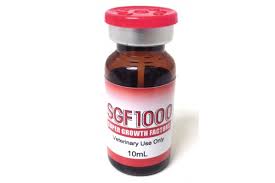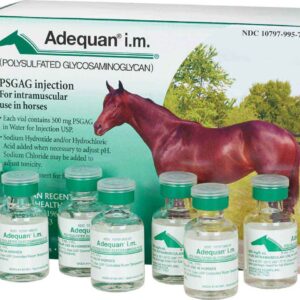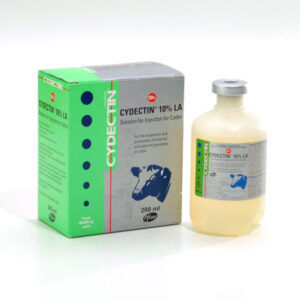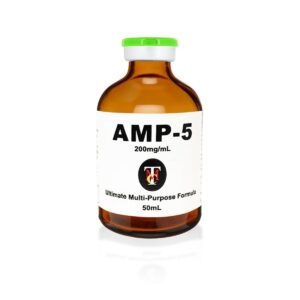SGF-1000 Activation is an innovative formulation consisting of Regenerative Placental Proteins, Cytokines (polypeptide regulators of diverse embryological origin), Peptides, potent Growth Factors and Signalling Molecules derived from Ovine Placental Extract. SGF1000 Activation is manufactured and purified through a patented low temperature process that involves homogenisation, fractionation and ultra-filtration of ovine placental extract suspended in a liquid.
What are Growth Factors? SGF-1000
A Growth Factor is a group of proteins that initiate further growth of specific cells. Growth Factors play a major role in enhancing cell differentiation, cell division and preventing cell death.
When scientists began studying the effects of biological substances on cells and tissues in culture, they discovered peptide like hormone substances that were seen distinct from previously any established hormones. Because these substances were effective in activating the growth of cells and tissues, they were labelled growth factors.
Growth Factors In SGF-1000 Activation
Transforming Growth Factor Beta-1
Transforming Growth Factor Beta-1 controls multiple functions such as cell increases, differentiation and cell transformation. Another major role for TFGB-1 is that helps prevent apoptosis which the self destruction of cells. As TGFB-1 is found naturally in the body it plays an important role even before birth as it helps form blood vessels, regulate muscle tissue, wound healing, and immune system functions. It is abundant in the tissues that help construct the mammalian skeleton; this is where it helps regulate bone growth.
A published study has revealed that TGFB-1 is the component that depletes the most during the aging process of the Equine Articular Cartilage. A higher concentration found in knee joints of juvenile animals is the reason for their elevated capacity to heal cartilage defects [1]. It is also interesting to note that TGFB-1 proteins were able to restore proteoglycan synthesis to control levels in the presence of Inteleukin-1B [1].
The molecular mechanisms which push equine airway remodelling remain undefined but aberrant signalling by the TGFB-1 is increasingly recognized as playing a major role [2]. This protein is an important fibroblast chemotactic factor. The numbers of fibroblasts have been proven to correlate with the expression of TGFB-1. It can also be accredited that TGFB-1 induces differentiation of fibroblasts to myofibroblasts.
Transforming Growth Factor Beta-2
Some people like to think of the Transforming Growth Factor Beta-2 (TGFB-2) as the OCD protein because it only allows cell growth and cell division in a very controlled manner.
In a 1999 study, it saw TGFB-2 significantly stimulate the activity of gelatinases A and B which resulted in the Equine Ovarian Stromal Cells remodelling process [3].
Fibroblast Growth Factor Beta-2
Fibroblast Growth Factor Beta-2 (FGFB-2) is a very potent angiogenic protein which means it stimulates the process of sprouting new blood vessels from already existing ones. Its most common veterinary use is supplying rise to tissue granulation which fills up the remaining space during the early wound healing process.
A United Kingdom based study in 2005 saw that FGFB-2 played a very important role in modulating cartilage repair. Chondrocyte Progenitor Cells (CPC) represents the response to the damage of the cartilage. FGFB-2 stimulated and significantly increased the levels CPC, providing even further importance for supplementing FGFB-2 [4].
Hepatocyte Growth Factor
Hepatocyte Growth Factor (HGF) proliferates the hepatic oval cells in the liver. The main role of the horse’s liver is to process vitamins, amino acids, and to drain the toxins from the body. If the liver has been damaged then it cannot perform these functions as effectively as they normally would. Many vets throughout the world are using HGF for regeneration of damaged livers which results in the horse’s processing the vitamins, amino acids, and eliminating toxins from the body a lot more efficiently. The end result is that the horse is able to produce a lot more energy from its daily intake.
Culture of mammalian livers in vitro revealed the existence of a parallel developmental pathway controlled by HGF, which could rescue the mammalian phenotype independent of Smad activation. These pathways combined at the b1-integrin, the level of which is increased by HGF in the cultured mammalian livers. HGF treatment reversed the defects in cell proliferation and hepatic architecture in the Smad21/2; Smad31/2 livers [5].
Keratinocyte Growth Factor
Keratinocyte Growth Factor (KGF) attaches itself to the FGF-2 and is a member of its family as it encourages cell division. KGF seems to only focus on proliferation and migration of epithelial cells.
A study from the College of Veterinary Medicine at Cornell University found that during the immune response to Heaves, epithelial cells migrate from the vasculature and into the lung. Cytokines then initiate remodelling of the lung parenchyma and increases the thickness of the airway smooth muscle resulting in epithelial cells to significantly increase. The objective of this process is to further increase effective respiratory conditions [6].
Epidermal Growth Factor
Epidermal Growth Factor (EGF) binds the Epidermal Growth Factor Receptor and has a close association the TGF family. In the horses body it encourages epithelial development which aids and accelerates the wound healing process by keratinocyte migration and the formation of granulation tissue.
Cambridge University have proven, the presence of EGF and its maintained upregulation during pregnancy in mares, and the presence of EGF receptors in the fetal allantochorion and maternal endometrium, suggest EGF influences marked growth of these two tissues during equine placentation [7].
Stem Cell Factor/Kit Ligand
Stem Cell Factor (SCF) or Kit Ligand (KL) binds to the c-kit receptor. SCF plays a crucial role in haematopoiesis which is the production blood cells and platelets occurring in the bone marrow.
As SGF-1000 is very effective for the use of horse breeding, it is the Kit Ligand gene which plays a major role. Western blot analysis confirmed the cross-activity of the Kit Ligand with horse testicular tissue. In conclusion Kit Ligand is expressed in differentiating spermatogonia in stallions [8].
Fibronectin Like Peptide
This protein have the ability to associate with many different ligands and contribute to morphongenesis (the process of cells developing their shape). It also influences cell adhesion, migration, differentiation, and specific gene expression.
As Fibronectin Like Peptide increases keratinocyte and fibroblast cell migration into wounds it impressively increases vascularization [9].
Parathyroid Hormone-Related Protein
Parathyroid Hormone-Related Protein (PTHrP) interacts with the Parathyroid Hormone (PTH) which is produced by the Parathyroid Gland.
Expression of PTHrP have empirically been shown to possess potent anabolic effects on bone and is one of only two FDA approved therapies in this category. PTHrP binds to Parathyroid Hormone-1 (PTH-1) receptor and initiates signal transduction with just as much potency of PTH. Markers for bone were significantly increased which supports its effects as an anabolic agent towards bone growth [10].
Scientific References:
[1]. Age-Related Effects of TGF-b on Proteoglycan Synthesis
in Equine Articular Cartilage
Javed Iqbal,1 Jayesh Dudhia, Joseph L. E. Bird, and Michael T. Bayliss
[2]. Recurrent airway obstruction in horses – an allergic
inflammation: a review
G. Moran1, H. Folch2
[3]. Production of Gelatinases and Tissue Inhibitors of Matrix Metalloproteinases by
Equine Ovarian Stromal Cells In Vitro1
Lifu Song, David G. Porter,3 and Brenda L. Coomber2
[4]. Promotion of the intrinsic damageerepair response in articular
cartilage by fibroblastic growth factor-21
F. M. D. Henson Ph.D.*, E. A. Bowe Ph.D. and M. E. Davies Ph.D.
[5.] Smad Proteins and Hepatocyte Growth Factor Control Parallel Regulatory Pathways That Converge on b1-Integrin To Promote Normal Liver Development
MICHAEL WEINSTEIN,1,2 SATDARSHAN P. S. MONGA,3† YE LIU,2 STEVEN G. BRODIE,1 YI TANG,3
CUILING LI,1 LOPA MISHRA,3* AND CHU-XIA DENG1*
[6]. Airway Epithelial Cell Contributions to the Immunopathogenesis of Heaves—Preliminary Investigations
Dr. Dorothy M. Ainsworth
[7]. Expression of epidermal growth factor and its receptor in equine placental tissues
S. N. Lennard, C. Gerstenberg, W. R. Allen and F. Stewart
[8]. The KIT is a putative marker for differentiating spermatogonia in stallions
Heejun Jung, Hyuk Song, Min Yoon
[9]. Fibronectin peptides in cell migration and wound repair
Kenneth M. Yamada
[10]. Parathyroid Hormone and Parathyroid Hormone-related Protein Analogs as Therapies for Osteoporosis
Marilyn Augustine, MD1 and Mara J. Horwitz, MD
IMPORTANT NOTICE
VECTA Animal Health has identified the below companies who are marketing and distributing counterfeit SGF1000. We ask all Veterinarians and Trainers to be very wary of purchasing SGF1000 from any company other than VECTA as counterfeit SGF1000 is very harmful for horses and camels. These small-scale, pharmacy made counterfeit SGF1000 companies have NO quality control and NO sterility protocols around the manufacture of counterfeit SGF1000.
VECTA SGF1000 is manufactured in a GMP/APVMA Accredited manufacturing facility in Australia.
COUNTERFEIT SGF-1000 COMPANIES
* Medivet Equine
* Advanced Equine & Camel Solutions (AECS) – Also sell a counterfeit version SGF1000 called SGF5000
* Taylor Made Equine – Also sell a counterfeit version SGF1000 called SGF5000
If you are purchasing SGF1000 from any company or website claiming to be a representative of VECTA SGF1000, please contact VECTA directly on [email protected] and we will provide confirmation if they are a certified representative for VECTA SGF1000 or a counterfeit Company. SGF-1000 SGF-1000 SGF-1000
SGF1000 is not available for sale in Australia and is not available to be shipped to the United States.





Reviews
There are no reviews yet.